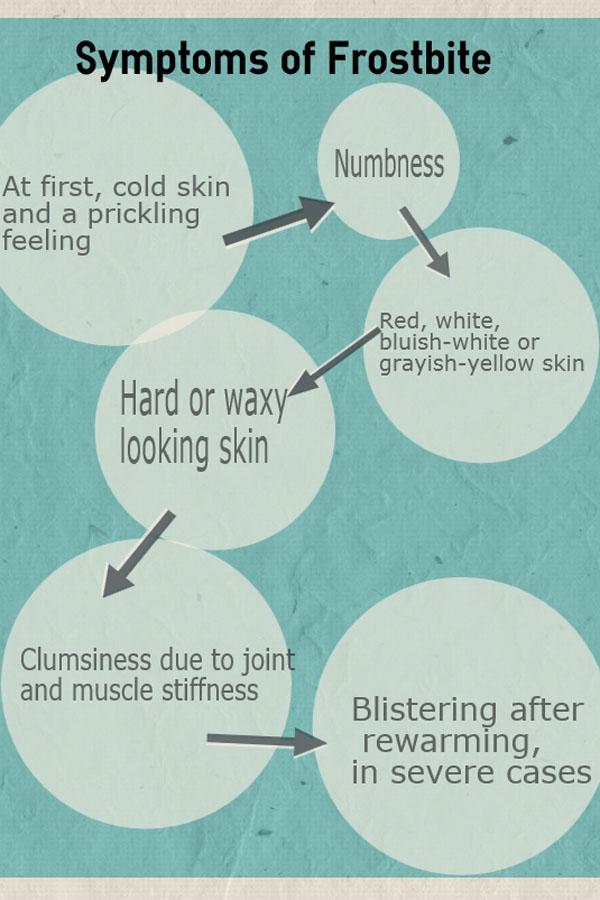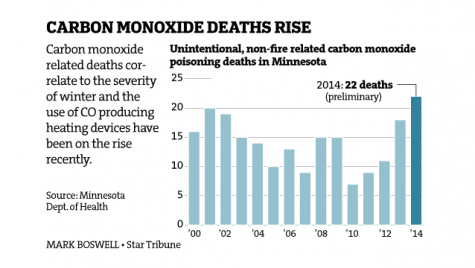Winter Survival
Health, dangers and tips for surviving a Minnesota winter
February 24, 2015
With the coming of winter, it is not unusual to see a change in attitude and health. But just how much of the change is actually caused by the cold, dry weather? For the longest time, people have been told that going outside without the proper warm attire can cause them to become ill, usually with the cold or flu, and that going outside with wet hair will do the same.
The reason why sickness is more prevalent in the winter months is because most people tend to stay indoors with the windows shut. By not allowing ventilation, germs stay trapped, and it is germs that get people sick- not the weather.
The weather does have side effects that can increase the risk of becoming ill. From Healthline.com in the slideshow, “Myth Busters: Does Cold Weather Make You Sick?”, by Jeanette Belliveau, “Cold weather inhibits the ability of mucus and nasal hairs to work disease agents out of your nose.” This is what causes people to sniffle. Sniffling is a risky side effect if the air is germ-infested. What some people do not know is that, according to “Common Cold Risk Factors”, an overview created by the Healthline Editorial Team, “Colds are actually caused by any one of more than 200 viruses.” Each virus has the potential of being carried around by the air. Research done by the National Institute of Health, or NIH, suggested that the flu virus’s coating gets tougher in colder weather and dry air helps the flu virus survive, allowing the virus to transmit itself with less difficulty.
When sick, whether they are contagious or not, people are trapping themselves in spaces with germs and viruses that can easily transfer from person to person, raising the risk for an outbreak to occur. A risk was taken that resulted in an outbreak at the OHS back in December. The CDC has also been monitoring flu activity for over 30 years and have found that the majority of months with the most flu activity in a given year peaked in between one of the months of January, February, March or in December.

Winter Dangers
Winter, besides the weather, also brings other hazards- icy/snowy roads, hypothermia, carbon monoxide poisoning, wind chills and frostbite. There is not much that can be done about the roads- that is something the city, county or state is in charge of, but caution can be taken while driving. Hypothermia is the bodily loss of heat, to the point that if too much heat is lost then the body begins to shiver, a person becomes confused and eventually will lose consciousness. It can be easily avoided by dressing in an attire that will keep the heat in and the cold out. Stay away from getting drenched or frigid air, these two things will only speed up the loss of heat.
Carbon monoxide poisoning is a problem in the winter because it is the time where more heating devices, that produce CO, are in use. Carbon monoxide, CO, is a colorless, odorless gas. A way to prevent poisonings is to have working CO detectors. The Star Tribune article “Carbon monoxide deaths surge in Minnesota; two Lindstrom women are latest victims” by Maya Rao states, “Twenty-two people died of accidental carbon monoxide poisoning in Minnesota last year (2014), according to a preliminary calculation by the Department of Health. That’s the highest number since at least the 1990s.”
An article by the OPP, Owatonna People’s Press, “Owatonna High School graduates experience carbon monoxide poisoning” by Ashley Stewart stated, “In 2014, the Minnesota Poison Control System received 514 calls regarding carbon monoxide poisoning with the highest number of calls coming in January with 70 and February with 115.” It later states the symptoms, “The Minnesota Department of Health says for most people, the first signs of exposure to low concentrations of carbon monoxide include mild headache and breathlessness with moderate exercise, and continued exposure can lead to flu-like symptoms including more severe headaches, dizziness, tiredness, and nausea that may progress to confusion, irritability, and impaired judgment, memory and coordination.”
Another danger that comes with winter is frostbite. It is an injury caused by the freezing of skin and underlying tissue. Cold temperatures, high wind chills, coming in contact with freezing metals and liquids can cause frostbite. The most common areas for frostbite are the ears, nose, fingers, toes, cheeks and chin.

The few ways to prevent frostbite is to wear loose layers of warm clothes, limit your time outside in the, possibly cold, wet weather and to cover the most common areas for frostbite. Also, check the weather to see what kind of morning weather to expect. Some students still ride the bus and wait outside in the cold. To help protect students, wind chill policies have been put into place. After last year when Governor Dayton closed all schools statewide, school districts began to question having a policy. Two of the biggest schools districts being Minneapolis and St. Paul. The Minneapolis Public School website says they will consider closing school when “Wind chill is at -35°F (-37°C) or colder at 6:30 a.m.” St. Paul follows what the district has set and will close schools if the wind chill is at -40°F. Even with new policies in place, schools are still struggling with their decisions to close. If a school does close, it needs to send out alerts and calls to all parents, students, staff and bus companies. Other factors can contribute to the closing of schools: road conditions, snow and projected forecasts.
Winter Tips
Here are some tips to help get through this tough weather and to keep healthy.
- Drink water- With the cold weather around, the body is using more energy than normal to keep itself warm, causing water inside to evaporate.
- Get some rest- A lack of sleep can have a negative effect on the immune system.
- Dress warm- If the cold is not bothersome, then the side effect of shivering and sniffling will decrease energy use and help keep up germ defense. If found in a position where there is a lack of heat, stay away from getting drenched or icy wind. Make sure to cover the more vulnerable areas of the body: ears, nose, toes, fingers and chin to protect from frostbite.
- Wear something that covers the nose, mouth and neck- This will help make the air warmer to breathe in. “Dry air also worsens cold symptoms, drying out the mucous membranes of the nose and throat and causing a stuffy nose and sore throat.”-Healthline
- Check the forecast- Be prepared for unwanted road conditions and temperatures. Go out early, shovel if needed, start your car and drive carefully.
- Make sure all detectors are fully functional- Wood can dry up, which can lead to a fire hazard, and CO is undetectable by humans.
So remember to stay warm, rested and hydrated. Use these tips to stay healthy and enjoy the weather.

